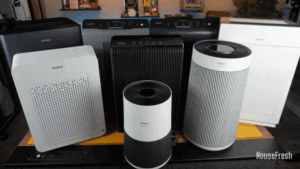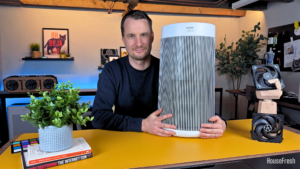Starting their journey in 1973, this South Korean company made it their mission to “deliver perfect products which are superior in Innovation, Performance, and Style”. By making sure each of their products meets the high standards of testing companies like AHAM and Energy Star, it’s no wonder they’re a major player in the market.
Alongside HEPA and Activated Carbon filters, they use their signature technology, PlasmaWave®. PlasmaWave® claims to reduce bacteria and viruses from the air in your home without producing harmful ozone.
As a disclaimer, we’re still not 100% convinced with ionization technology, so it will be interesting to see if PlasmaWave® persuades us otherwise.
As with all our product reviews, we don’t just do a little reading and look at pictures, we actually BUY the thing and conduct our own performance tests. This lets us play around with each product to tell you exactly what it’s like in a real-world setting, highlighting both pros and cons. We’re not scared of delivering the truth. If it sucks, we’ll tell you, trust us.
Here’s how we tested the performance of the Winix 5300-2:
The lowdown on the Winix 5300-2


The Winix 5300-2 may be older but isn’t dated. This hard-working air purifier proves that Winix builds efficient units to last, and at a price we can get along with. Here are some of the things we really like about the 5300-2, and some of the things we think could be improved.
What we really like
What we think could be better
The specs
Although Winix can boast a good CADR (Clean Air Delivery Rate), it comes at a cost. When you have a high-efficiency fan, you need to be able to afford the cost of powering it (we’ll get into that further down). The other thing that comes with a big fan is noise. On its highest fan speed, you can expect the 5300-2 to make more noise than other units out there like the SmartAir Blast Mini or Blueairs’ Blue Pure 211+.
| HouseFresh rating: | ★★★★☆ |
|---|---|
| Time to clean our 728 cubic feet test room (with the device running at top speed): | 27 minutes |
| Air purifier technology: | Washable Fine Mesh Pre-filter, Activated Carbon Filter, True HEPA Filter, Plasmawave Air Cleaning Technology |
| Recommended room size (4.8 air changes per hour): | 360 sq. ft. |
| Clean air delivery rate (CADR): | Dust: 243 CFM Smoke: 232 CFM Pollen: 246 CFM |
| Dimensions (in inches / in cm): | 15W x 8.2D x 23.6H inches (38.1W x 20.8D x 59.9H cm) |
| Weight (in pounds / in kg): | 14.8 lbs (6.7 kg) |
| Filter life: | HEPA filter: every 6 months Carbon filter: every 3 months |
| Noise level in decibels (measured from 3 ft. away with a sound level meter): | Speed 1: 37.1 dB Speed 2: 39.6 dB Speed 3: 43.3 dB Speed 4: 59.2 dB |
| Electricity consumption in watts (recorded with an electricity usage monitor): | Standby mode: 0.41 watts Speed 1: 4.85 watts Speed 2: 6.7 watts Speed 3: 10.47 watts Speed 4: 51 watts |
| Estimated running cost (electricity consumption + official filter replacement): | $150.99 per year |
| Cost per CADR cfm (based on dust CFM as reported by AHAM): | $0.60 |
| Manufacturer’s warranty: | 2 years |
| Country of manufacture: | South Korea |
Slender, modern, matte finish design with user-friendly controls
As soon as you pull the 5300-2 out of the box, you notice how different it looks to other models. Unlike the SpongeBobiness of the Coway Airmega 300 or the flat glossy Alen BreatheSmart 45i, this Winix is slender with a matte gray finish and a black control panel.
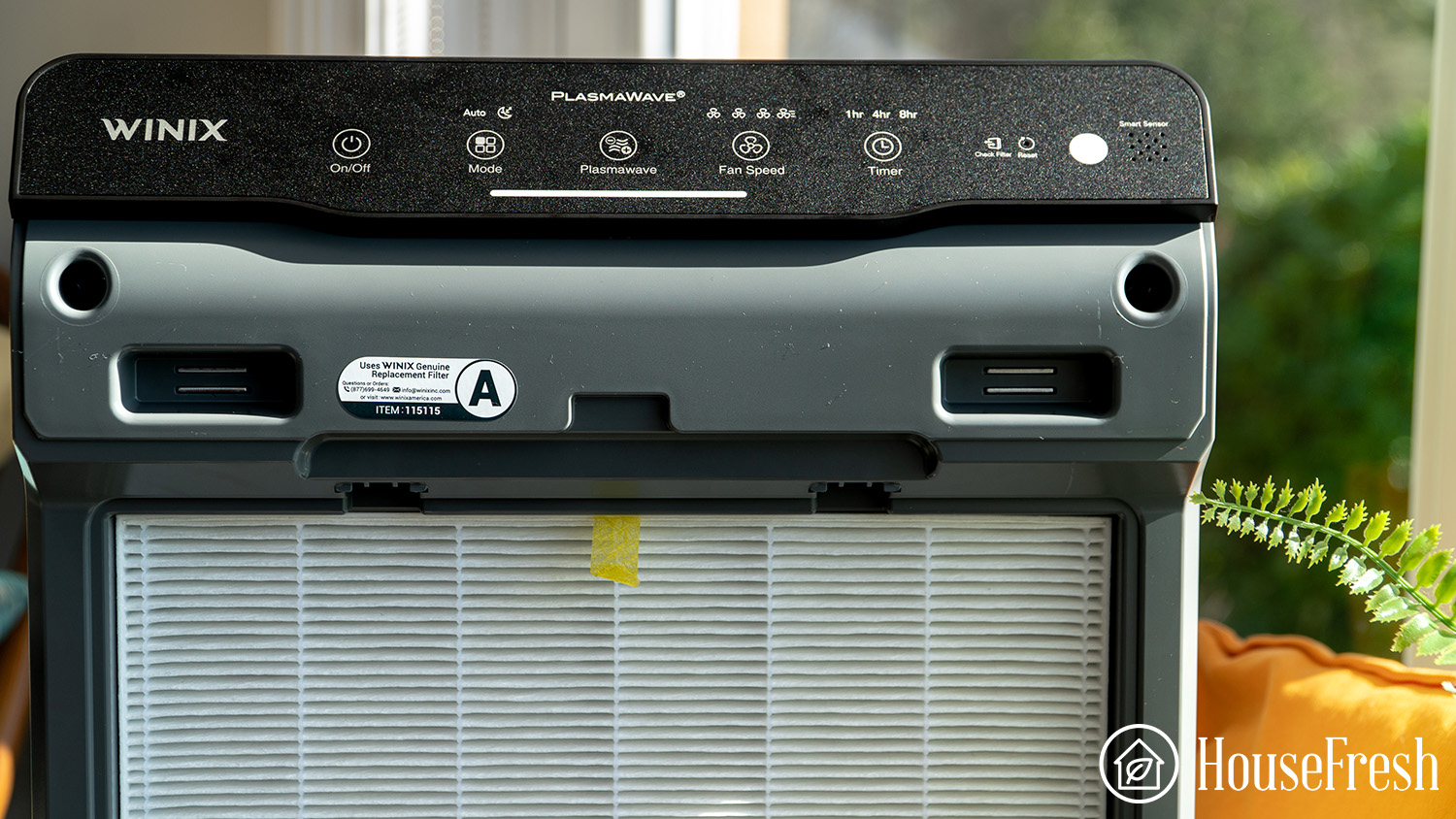
It has a flat base, so no need to worry about it wobbling over and it stands 23.6 inches tall. There’s a nice-looking grill on the front panel and side inlets, so plenty of air can enter the filters.
The front panel is magnetized rather than having a clip, so you know it won’t be falling off in the middle of the night. A great safety feature on the 5300-2 is the fact the unit automatically shuts off when you remove the front panel to clean or change the filters. This way there’s no chance of you trapping your fingers in a moving fan.
We stood the 5300-2 next to the Honeywell HPA300 so we could compare the two units side by side. The HPA300 cleared pollution from our testing room only 1 minute faster than the Winix, but is heavier, more expensive, and uses a lot more energy.
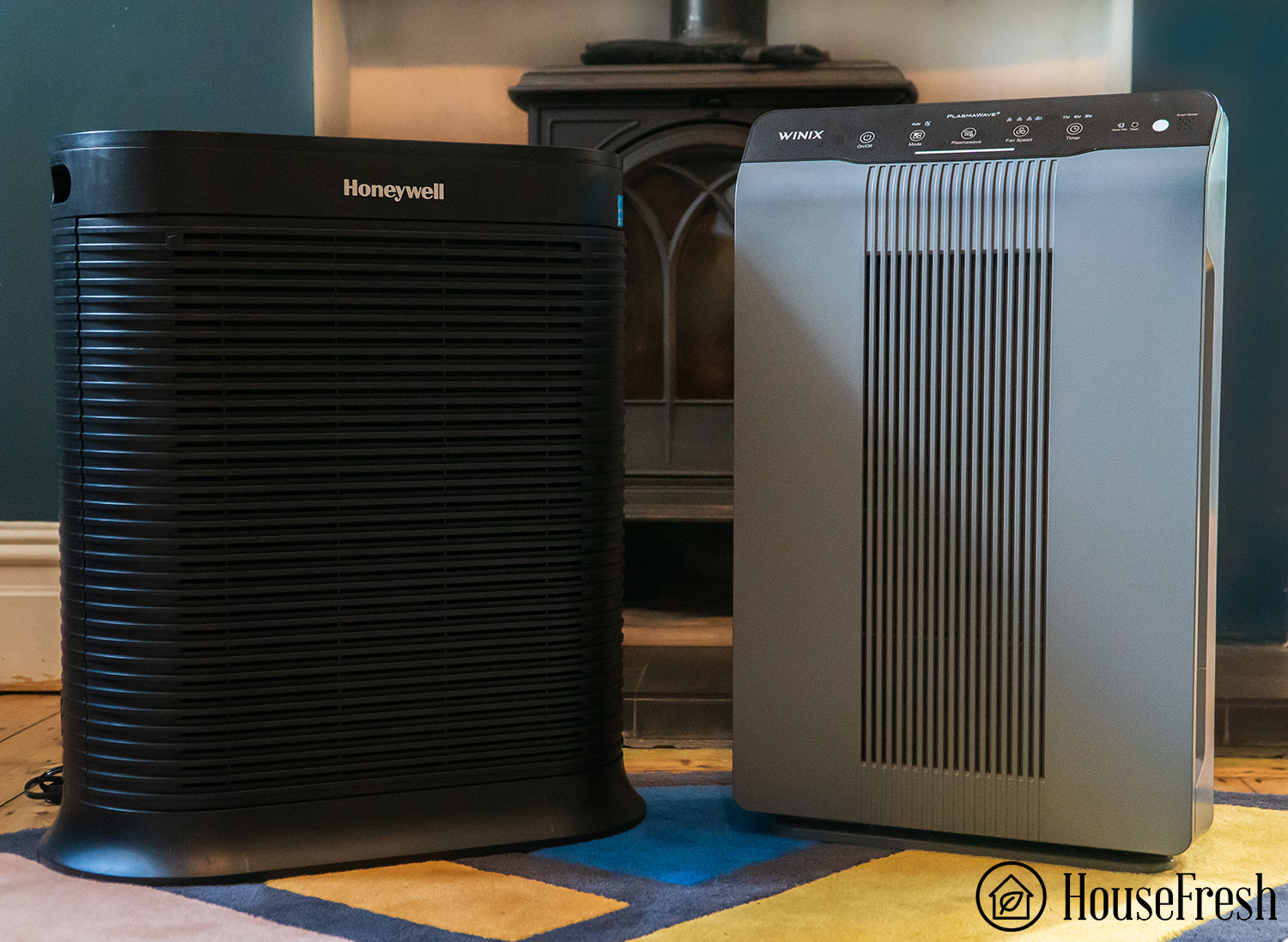
I don’t know about you, but I personally prefer the look of the Winix in comparison. I think it complements a room more and has a few more features like its smart sensor and air quality indicator light.
The controls on the 5300-2 are easy to navigate, easy to operate, and easy to understand.

There are five buttons across the top of the unit to turn it on/off, select mode, engage PlasmaWave®, change fan speed, and set the timer. Each button is responsive and the icons above light up to show what setting the unity is on.
You have four different fan speeds to choose from, press the fan speed button to scroll through the speeds. The timer allows you to select from three countdowns, 1hr, 4hr, and 8hr. Once the countdown hits zero, the unit will automatically shut itself off.
The mode function selects between sleep Mode and auto Mode. Sleep mode sets the fan to its lowest (quietest) speed and dims all the lights on the unit so you can get a good night’s rest without any distractions.
The auto mode takes over the controls, so you don’t have to change the fan speed. Once engaged, the Smart Sensor measures air quality in the room and adjusts fan speed accordingly.
It also lets you know the quality of your air with its indicator light:
🔵 Blue: Good
🟠 Orange: Fair
🔴 Red: Poor
Three-stage filtration, powered by PlasmaWave technology
The activated carbon filter could be improved but the presence of a TrueHEPA filter really helps

When you open the front panel, you’ll first see the pre-filter. This is here to stop any of the larger airborne particles from getting to the HEPA filter, thus removing them from your environment and prolonging the life of your HEPA.
You can unclip and remove the pre-filter, enabling you to clean it when needed. After prolonged use, the pre-filter will get clogged with dust particles. You can wipe the filter down or vacuum it clean.
When you unclip the pre-filter, you’ll reveal the bonded activated carbon filter:
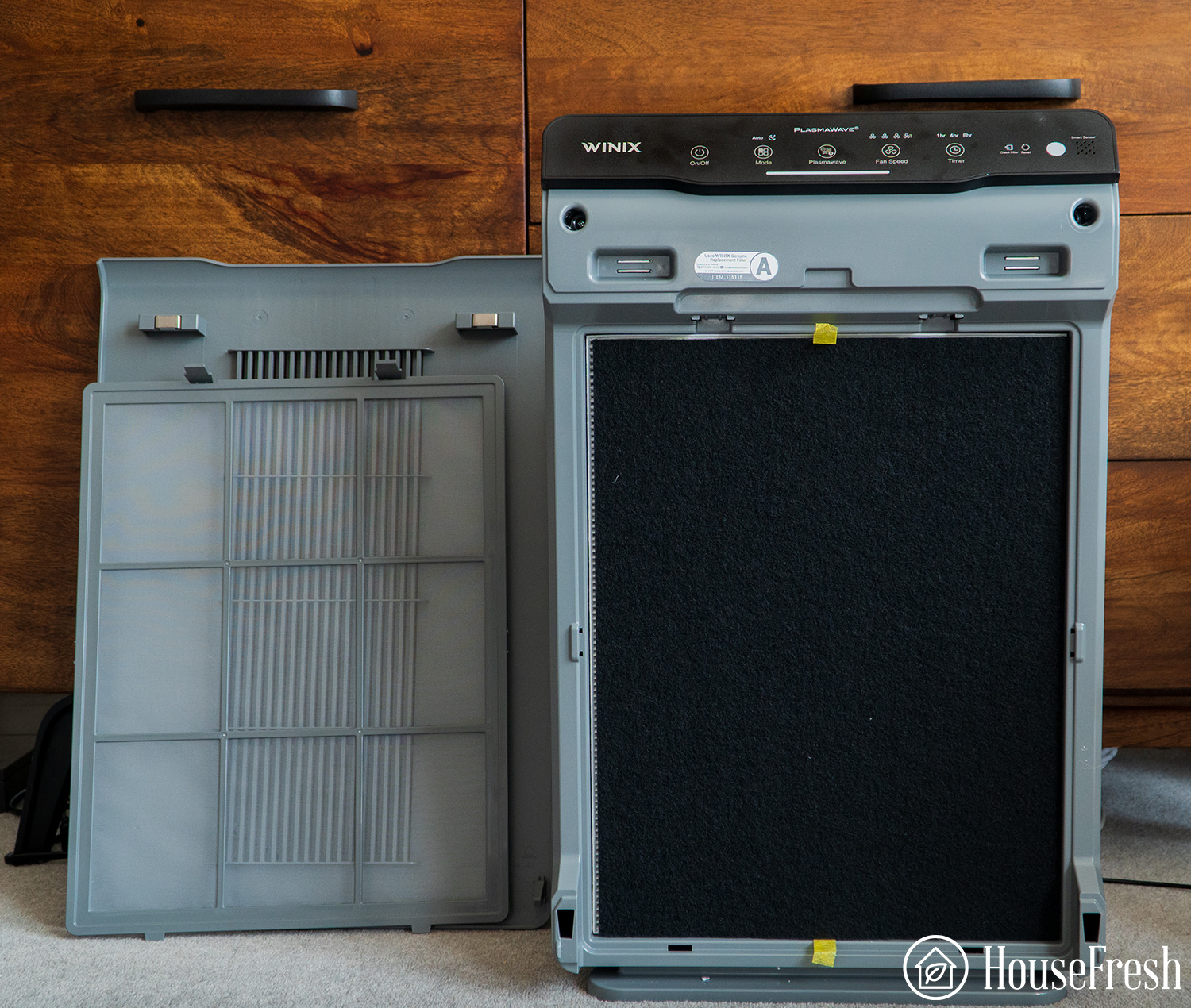
As you probably know, the activated carbon filter takes care of VOCs (Volatile Organic Compounds) and unwanted odors, removing them from the air. Here, activated carbon is pressed into a sheet so when VOCs try to pass through, they get caught in the carbon through a process called adsorption.
The basic rule for an activated carbon filter is; the more carbon it contains, the more effective it is.
Unfortunately, the 5300-2 doesn’t contain much of this, so it’s less effective than some (like the Coway Airmega 300) at removing VOCs and odors from your home. You should be able to clearly see how flimsy the activated carbon filter it is in the photo below:
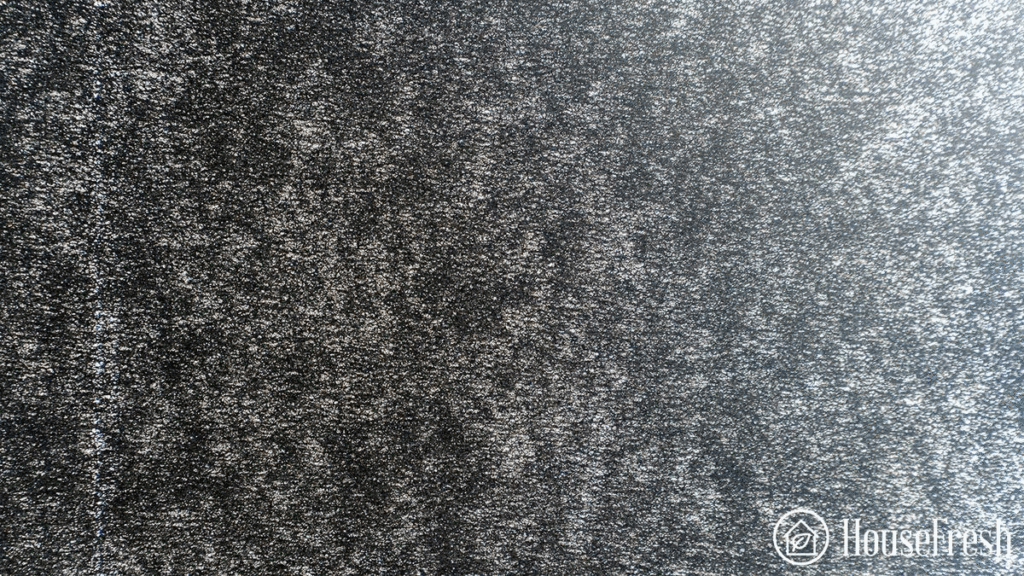
Once you’ve removed the activated carbon filter, you expose the True HEPA filter:
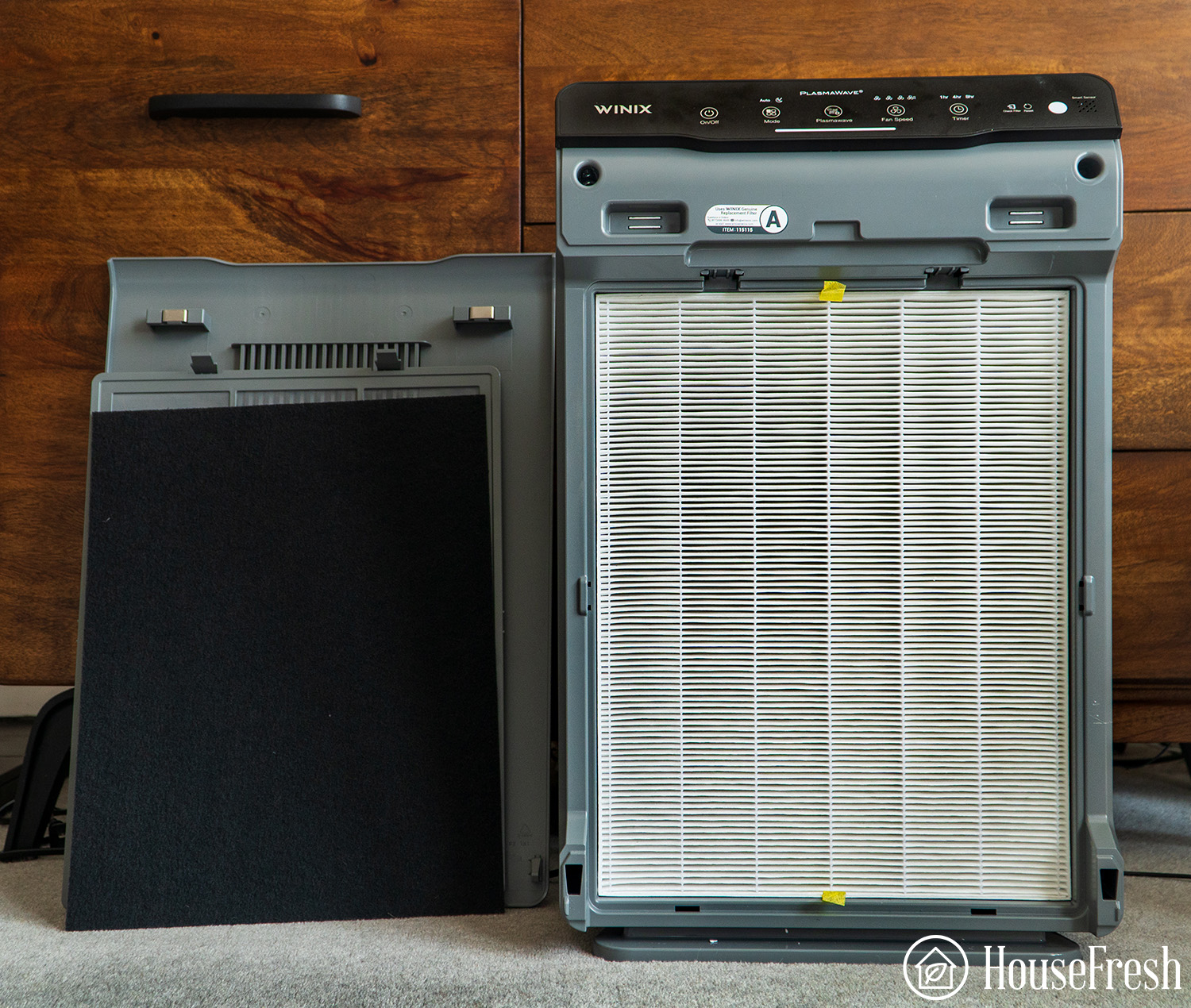
This is the main part of the filtration process. Made from tightly woven fibers, the HEPA catches tiny airborne particles, trapping them so they don’t get released back into your room.
True HEPA filters are designed to remove up to 99.97% of particles down to 0.3 microns in size (that’s SMALL). These are things like:
- Pet dander
- Pollen
- Mold
- Smoke
- Fine dust
Having a HEPA filter is the most efficient way of removing these harmful pollutants from the air in your home. If an air purifier doesn’t contain a HEPA filter, I wouldn’t look twice at it.
Replacing the filter is a pretty simple process on the 5300-2. It’s as easy as 1, 2, 3.
- Remove the front panel and unclip the pre-filter
- Pull the tab removing the filter
- Slide in the new filter and re-attach the pre-filter and front panel
Here is a video just in case that seems a little complicated.
Remember, when you purchase this unit new or buy a replacement, the filter will come with plastic packaging. You have to remove this packaging before turning your air purifier on. If you don’t, the filter will be rendered useless and you’ll probably start to smell burning after a while as the plastic erodes.
What is PlasmaWave®?
Most brands these days use their signature technology in their air purifiers. This not only sounds fancy, but it shows that they have their own engineers developing technology to make your home cleaner, aka, more trustworthy.
For Winix, it’s PlasmaWave®.
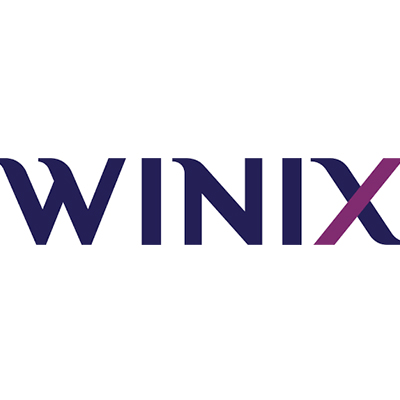
This basically means the unit has an ionizer. An ionizer sends out electrically charged particles into the air, which attract airborne pollutants and pull them to the ground. Pretty much like when clothes stick together fresh out of the dryer from static.
I’ve never been too keen on ionizers for two reasons:
- We tested one and it didn’t seem to make any difference to the pollution in my room.
- The ions pull pollutants to the ground, they don’t actually remove them from the environment.
Because of this, I won’t be using the PlasmaWave® technology in my home.
The Winix 5300-2 cleared our test room in 27 minutes
That is 7 minutes faster than the Alen Flex and the Mila, but 8 minutes slower than the Winix 5500-2
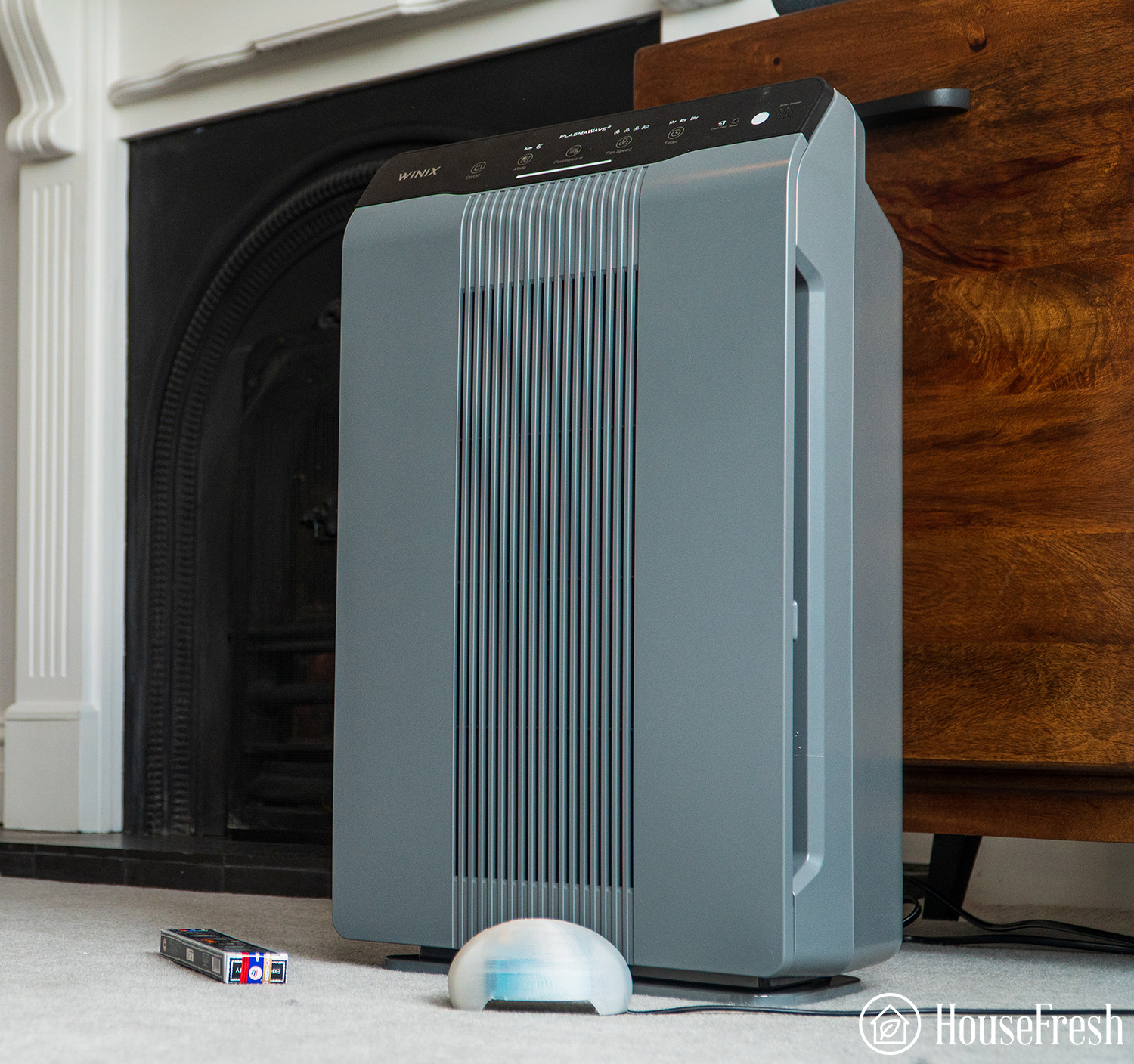
So, how does the 5300-2 actually perform? With every air purifier we review, we put it in our performance testing room where we see how well it does at removing airborne pollutants. We test each product in the same room under the same conditions in order to get a fair result that we can compare against other units.
Because we want to give you real-world results, we don’t test our air purifiers in a lab or manufactured environment. We use an actual room in our actual home.
To get these results, we placed the 5300-2 in our 705 cubic ft performance room and contaminated the air using incense. We then turned the unit onto its highest fan speed and waited until the room was clear of pollution.
We monitored each stage of our test using our indoor sensor from Purpleair to provide us updates on PM1.0ug/m3, PM2.5ug/m3, and PM10.0 ug/m3.
Here are the results:
As you can see from the graph, the Winix managed to clear the room of contaminants in 27 minutes which, for the size of the unit, was a good performance.
Air cleaning performance compared
When compared to other units, it was only 1 minute more than the powerhouse which is Honeywell’s HPA300, and Coway’s Airmega 300. Quite surprising as both of those units have a higher CADR.
Noise ;evels test results
As I mentioned before, because of its powerful fan, the 5300-2 can get quite loud when running on its higher fan speeds. At its lowest speed, it clocks in at 27 dB, but on high, it can reach 60+ dB. This is loud enough to disturb your movie or gaming.
Fortunately though, as you can see from our performance tests, you should never need to have it at full speed for long periods of time. Here’s a video to demonstrate the sound levels.
The cost to run a Winix 5300-2 : $150.99 per year
When purchasing an air purifier, most of us will factor in how much a unit costs before buying. Unfortunately, that’s not the only expense you need to consider.
1. Electricity costs = $66.23
With rising energy costs worldwide, you’ll need to consider how much an air purifier costs to run — especially as it is recommended that you have it on for eight hours every day.
We clocked the 5300-2 at using 63.4 watts on full power, which isn’t the most efficient we’ve tested, but it also is not the worst. It looks good when compared to the Honeywell’s HPA300, as it uses 87 watts at full speed. But put it next to the Levoit Core 600S, which cleared our performance room 12 minutes faster using 47 watts. It doesn’t look so great.
We worked out that if you had the 5300-2 on full fan speed 24 hrs a day, it would cost $66.23 per year, according to data from the Department of Energy’s appliance energy calculator.
2. Filter costs = $84.76
Air purifier filters don’t last forever. Periodically, you must replace each filter so your unit can run efficiently. If you don’t, you’re running a useless fan wasting energy.
Over time, HEPA and activated carbon filters become full of all the contaminants they’ve pulled out of the air. As they get fuller, they become less effective; therefore, they must be swapped out for new ones, which costs money.
As the activated carbon filters don’t last as long as the HEPA filters, Winix has included some replacements in the box. Nice touch, Winix; thank you!
When it’s time for a full replacement, the pack comes with one HEPA filter and four activated carbon filters, so you only have to make one purchase each time. This is well thought out and much appreciated, as some brands like to leave you to purchase separate filters.
Unfortunately, the filters cost around $80, so replacing them every 6 months can get a little expensive.
Bottom line
A solid option, although you might prefer to go for the Winix 5500-2 which looks nearly identical but offers better air cleaning performance and a sturdier activated carbon filter
Although Winix has released an updated model, that doesn’t mean the Winix 5300-2 is out of the race completely. This air purifier has enough features to keep you happy, and its design would look great in your home.

That said, the Winix 5300-2 is let down by the noise its fan can generate and that fact they use an ionizer as their signature technology. The activated carbon filter isn’t the best by far and the matt control panel is susceptible to fingerprint marks.
You can’t deny its performance, though. The 5300-2 sits comfortably alongside the “Doctors’ favorite” Honeywell’s HPA300 and Coway’s Airmega 300, making this unit a strong contender in an ever-growing market.
SOURCES
In order to calculate the monthly energy consumption costs, we used the appliance energy calculator from the Department of Energy. We calculated the daily and yearly costs of running an air purifier for 24 hours a day for 365 days. We ran this calculation utilizing the U.S. average utility rate of $0.12/kWh as of February 14th, 2024.



